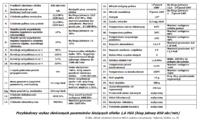pioter_ch wrote: Yesterday at -5 did not fire from the shot, only a few seconds I had to spin and cast it for a moment, after which it already worked well.
I therefore support what I said before. It arouses my suspicion
cylinder leaks , i.e. a decrease in compression. Or incomplete technical efficiency
injectors or other components in the fuel circuit . In short, you need to check what is guilty:
an injector or a cylinder, maybe both .
For now, I would leave the turbocharger alone, because it does not contribute to difficulties in starting and "accusations" of the engine, despite the fact that it can be heard excessive whistling. It would only be worth checking the tightness of the air pipes, because even a tiny hole, e.g. in
intercoolerze causes depressurisation of the air circuit. So through this hole a turbo sound is emitted, which normally, i.e. when the system is tight - cannot be heard.
I would also check that too much engine oil does not penetrate through the compressor seals (not the turbines). This will be immediately visible after disconnecting the pipe connecting the compressor to
intercooler . If you spill a liter of black goo on your face, you have reason to worry because the turbo lets in too much oil.
In your first place I would look for a good mechanic who knows systems
Common Rail and type units
D4D . Meches must have a Toyota diagnostic program. It should start by searching the EPROM memory of the motor computer for errors (saved in the form of codes e.g.
P1234 ).
He should also suggest further steps to locate the fault and then remove it.
That's all the forum can help you with. The rest depends on the mechanics. Alternatively, if they are helpless, report again, but unconditionally with fault codes (even without a translation). Or with the tables as below with the record of current parameters read while driving with a diagnostic laptop on your lap. Otherwise, we can only "beg" so far ...
 Attention! The table is an example and from a different engine. So do not suggest that there should be other values in your "brush". The point is for the mechanic to make the most of the motor computer as a great collection of information to make a diagnosis. There is no whip - if there is a disturbance in burning "too little air or too much fuel", the computer will detect it and then show in the read data, as referred to. Read the notes carefully in the table.
Attention! The table is an example and from a different engine. So do not suggest that there should be other values in your "brush". The point is for the mechanic to make the most of the motor computer as a great collection of information to make a diagnosis. There is no whip - if there is a disturbance in burning "too little air or too much fuel", the computer will detect it and then show in the read data, as referred to. Read the notes carefully in the table. Good luck diagnosing and don't forget the forum address.
Kitten KotBury2



